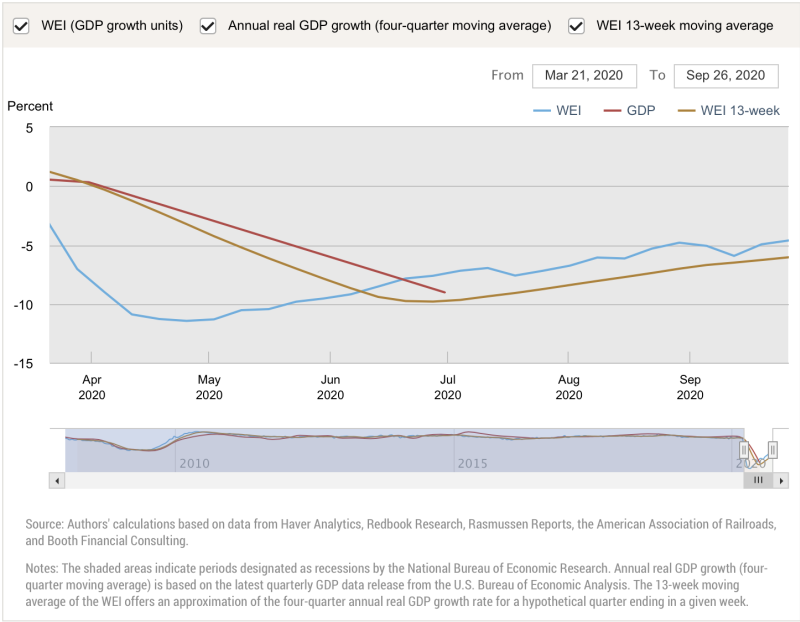The most recent New York Federal Reserve Weekly Economic Index (WEI) improved from a -5.0 in the third week of September to -4.6 in the week of September 26. The index continues to improve at modest rates since it hit the low point the week of April 29 at -11.45. The increase in the WEI for the week of September 26 was due to a decline in initial unemployment insurance claims, which more than offset decreases in electricity output, fuel sales, rail traffic, and tax withholding.
The WEI represents the common component of ten different daily and weekly series covering consumer behavior, the labor market, and production. The WEI is scaled to the four-quarter GDP growth rate; for example, if the WEI reads -2 percent and the current level of the WEI persists for an entire quarter, we would expect, on average, GDP that quarter to be 2 percent lower than a year previously.
For more information and to view the current release please visit the Federal Reserve Bank of New York.









